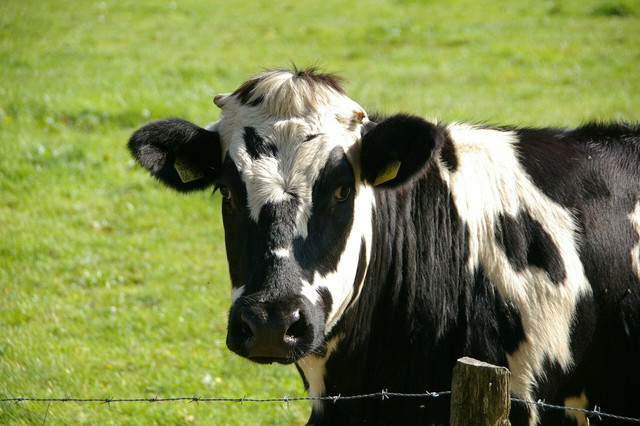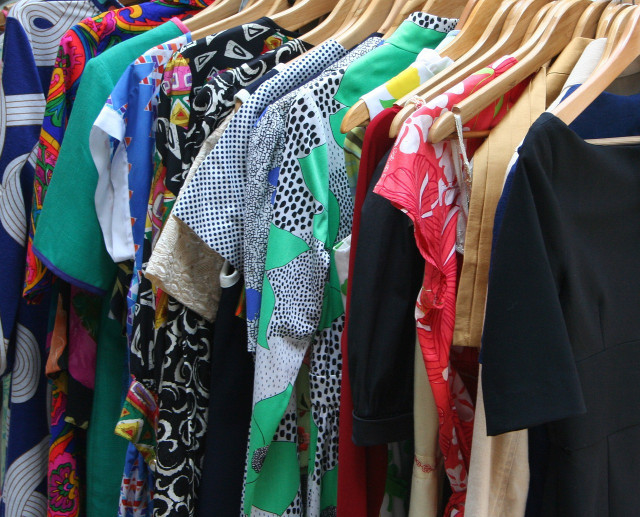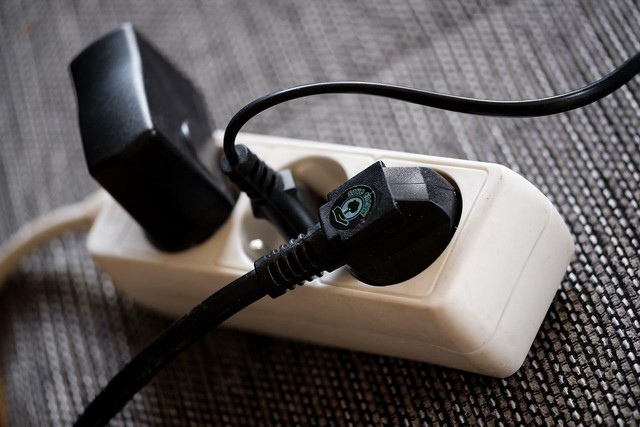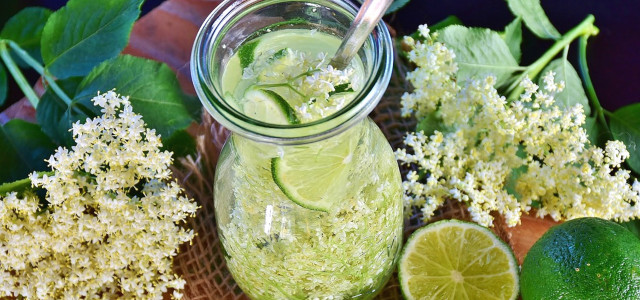Shopping in an affordable and at the same time sustainable fashion can be challenging, but sustainable consumption doesn't have to cost a fortune. Here's how to save money without compromising on what matters.
A green lifestyle doesn’t always seem compatible with a small budget. Many brands are actively trying to rethink and improve their supply chains to become more sustainable, which means their products come at a higher — yet reasonable — price.
Unfortunately, many companies have been capitalizing on the overall growing awareness of sustainability by marketing products that are supposedly greener and a lot more expensive, sometimes without making any meaningful changes to their production schemes — and that’s what greenwashing is.
At the same time, the vast output of “sustainable” consumer goods is driving the idea that a sustainable lifestyle can be bought when instead, our focus should be on consuming less and more consciously.
But that’s not all that’s in the way of affordable, sustainable living. If recently you’ve found the cost of groceries and everyday consumer goods to be unusually high, you’re not wrong. While organic food and sustainably sourced and manufactured items are generally more expensive than products that don’t adhere to the same strict production standards, they might have just become even more costly.
Between inflation, which in the U.S. reached a 40-year high in June, ongoing disruptions of the supply chain due to COVID (yes, still), and growing international concern over the availability of different resources due to the war in Ukraine and other conflicts across the globe, many factors are causing prices to skyrocket. Moreover, heatwaves, droughts, floods and other severe weather occurrences connected to climate change are causing damage to crops and other food production sites.
It’s important to acknowledge that all of these aspects are making it increasingly difficult for many people to choose the “greener” option. But do not despair. Here’s what you can do to make your consumption habits more sustainable without spending more money.
1. Cook Fresh and Seasonal Meals



(Foto: CC0 / Pixabay / Couleur)
We cannot emphasize this enough:
- buy your fruits and vegetables from local businesses and
- try to buy only what’s in season in your region.
That way, you’ll get high-quality produce fresh from the field that lasts much longer than food that has had to travel from the grower to the manufacturer to the grocer to get to you. Buying organic produce directly from regional producers is often cheaper than buying it at the store and usually means it has a smaller carbon footprint.
Buying only what is currently in season doesn’t mean you can’t enjoy some of your favorite dishes out of season! There are many ways to preserve fruits and vegetables so you can keep them for another time of the year when usually you’d have to buy them at the store at a much higher cost – both in terms of the money you pay and their environmental impact.
Here’s some inspiration on seasonal produce to buy or harvest that you can easily process yourself:
- Preserving Plums: How to Enjoy Them All Year Round
- How To Preserve Tomatoes: 3 Easy & Quick Methods
- How to Freeze Chives & Preserve Them
2. Combat Food Waste and Save Money While You're at It



(Foto: CC0 / Pixabay / congerdesign)
If you’re looking for ways to save money on food without having to sacrifice your consumption of healthy organic products, we’ve got some ideas for you that will also help reduce food waste:
1. Use the entire vegetable, not just the parts you know
Too often, we throw out perfectly good parts of our veggies that are rich in vitamins, tasty and simply too good to go! Peels, leaves, seeds and other cut-off parts often go straight into the trash. Take a few minutes to learn how to reuse vegetable scraps — you’ll have more delicious ingredients to cook with and create less waste.
And it’s not just for cooking! Many vegetable scraps or fruit peels can be used in the household as well. Some inspiration:
- 4 Clever Ways to Use Leftover Apple Peels
- Orange Peel Uses: Why You Shouldn’t Throw The Skin Away
- Banana Peel Uses: Why You Shouldn’t Throw Them Away (Plus: Can You Eat Banana Peels? 3 Ideal Recipes & The Risks)
- Lemon Peel Benefits: Why You Shouldn’t Throw Out the Rind
- Pineapple Peel: Why You Shouldn’t Throw Them Away
- Ginger Peel: When You DON’T Have to Peel & How to Use It When You DO
2. Too Good To Go: An Anti-Foodwaste App
In the U.S., the equivalent of about 160 billion dollars worth of food goes to waste every year. The Too Good To Go App hopes to change that by connecting customers with restaurants, grocery stores and other businesses that have perfectly good leftover food that they need to sell before it spoils.
It’s possible that the app doesn’t yet have any offers where you live. If that’s the case, check if there are any local businesses with similar offers. Some may sell food that has to go at a reduced price. Perhaps you can even point them to the app.
3. Check out companies selling “ugly” produce at a reduced rate. Imperfect Foods is a produce delivery company that sells products that would otherwise go to waste.
4. Take a look at our guide on storing food correctly to keep your food from going bad too fast and save money. Also, check out our guides on how to store those foods that are notorious for spoiling too quickly:
- How to Store Fresh Strawberries So They Last Longer
- Should Tomatoes be Refrigerated? Tips for Storing Tomatoes
- How to Store Blueberries to Keep them Fresh
- How to Store Raspberries: 2 Ways to Keep them Fresh
5. Forage your surroundings
While this might be more difficult if you’re living in a bigger city, you may be surprised at how much wild produce is still growing around you. There are many public places where fruit, nuts or berries are simply left to rot.
Perhaps you also know of some people in your community who are unable to pick their own trees and are thankful for an extra set of hands and who will share some of their produce. Here are some guides on foods that you can easily forage in many places:
- Simple Recipe for Homemade Elderflower Cordial
- How to Eat Dandelion: Easy & Delicious Ideas
- Sweet Woodruff: Ultimate Growing Guide & Syrup Recipe
- Where Does Wild Garlic Grow? Where to Buy and Harvest It & How to Use It
- Drying Rose Hips: 3 Easy Ways and Tips
- Schisandra Benefits & How to Use
3. Replace Conventional Cleaning Products With Inexpensive Natural Allrounders



(Foto: CC0 / Pixabay / Monfocus)
There are many cheap, natural alternatives to conventional cleaning products, which you may already have at home. You’ll find that you don’t need many separate cleaning products taking up space in your cupboard but can clean your home using just a few simple ingredients.
- You can, for instance, use citric acid for cleaning, which has many practical household uses that range from fabric softener to stain remover and toilet cleaner.
- Baking soda is great not only for cooking but also for cleaning. You could, for example, make your own DIY baking soda carpet cleaner or use it to unclog your drain without harmful chemicals. If you find yourself without any on hand, you can try one of these five natural baking soda alternatives.
- What do stockings, newspaper and black tea have in common? Each can be turned into an excellent homemade window cleaner that will get you a streak-free shine.
- If, instead, you’re looking for an all-purpose cleaner that works as a natural disinfectant and has a fresh scent, all you need are two ingredients: white vinegar and lemons.
What’s great about all of these options is that they don’t contain any harmful chemicals, so they are a lot safer to use around your home than many store-bought cleaning agents. They are also a very good alternative to the often pricey sustainable cleaning products you can buy at the store.
4. Reduce Meat Consumption or Quit Meat Altogether



(Foto: CC0 / Pixabay / wernerdetjen)
At the retail level, organic meat, like other organic products, is usually more expensive than non-organic products. Uniform standards and labelling guidelines developed by the USDA require that animals reared on an organic farm must be fed organic food and allowed access to the outdoors, and they may not be given antibiotics.
Studies suggest that antibiotics used in livestock farming may pose risks to human health and possibly add to the public health crisis surrounding human antibiotic resistance. Conventional meat production often also means animals are being raised and slaughtered under cruel conditions.
Moreover, the meat industry takes a devastating toll on the environment: from sacrificing precious natural habitats to create the vast monocultures required to feed animals, to toxic chemicals used to fertilize these fields, pollution from the use of heavy agricultural machinery to the enormous amount of methane emitted by livestock, cows especially.
According to the United Nations Food and Agriculture Organization, total emissions from global livestock represent 14.5 percent of all anthropogenic greenhouse gas emissions. In this regard, whether the animals were raised on an organic farm really doesn’t make much of a difference.
The list of problematic side effects of meat consumption goes on. Despite a growing awareness regarding these issues and more vegetarian and vegan food options available in many stores and restaurants, meat consumption has remained relatively stable in the U.S.
In fact, a 2021 study by the Department of Agricultural and Consumer Economics at the University of Illinois has found that from 2015 to 2019, the amount of meat consumed per person increased each year, reaching an average 264 pounds in 2020.
So, what does this mean for “sustainable” meat consumption? By reducing your overall meat intake, you can enjoy higher-quality products without spending more money on them overall. Also, it’s a clever way to reduce your carbon footprint.
If you can quit meat altogether, your health, wallet, and the environment will thank you. Maybe you even want to try going vegan?
5. Affordable Fashion, but With a Conscience



(Foto: CC0 / Pixabay / JamesDeMers)
Americans discard millions of tons of textiles every year. This is a huge problem because each piece of clothing we own requires many critical resources to be produced, then more when thrown out:
- clothes production uses huge amounts of water, for instance — and causes large-scale water pollution;
- clothes made of synthetic fibers release microplastics into the ocean;
- and the fashion industry contributes significantly to carbon emissions.
Also keep in mind that many of our clothes are still manufactured under harrowing labor conditions, often in countries belonging to the Global South, far away from where they are sold.
Clothes left unsold, thrown out or donated after use are frequently shipped to low-income countries where they enter and undercut local markets. Others end up in our landfills, which may leak toxins into the surrounding environment and release greenhouse gases into the atmosphere. In the worst case, clothes are dumped illegally in nature, one recent example being the mountains of used and unsold clothes that have piled up in Chile’s Atacama desert.
This means that moderation is key when it comes to buying new clothes — whether they’re sustainably sourced or not. It does not mean that someone who cannot afford expensive “green” fashion labels necessarily has a larger carbon footprint than someone who buys only from sustainable labels but still consumes a lot.
Here are some tips on how to keep your wardrobe affordable and sustainable:
- Take a stand against fast fashion and try to reduce your shopping to clothes that really serve your needs: look for pieces that are timeless, high-quality (look for natural fibers), and easy to combine with the rest of your wardrobe, and will therefore presumably last much longer than some cheaper alternatives.
- Don’t go for every trend and don’t buy everything immediately, but rather take your time to consider whether you actually need a certain item and whether your excitement for it lasts.
- Vintage – the new normal? Lucky for us, there are thrift stores in nearly every town and city — and there are new ones popping up all the time. If this makes you think of hand-me-downs, think again! You can find unique, high-quality items for very little money. They might just become some of your most cherished pieces.
- Another way to find used clothes in good condition is to go to flea markets, garage sales or search online marketplaces. This is a great option if you’re shopping for children who outgrow their clothes fast. Find some great places to buy and sell secondhand clothes online.
- Rent clothes online: this is a great way of reducing fashion’s carbon footprint while keeping your wardrobe up to date and up to your changing needs. We’ve compiled a list of the best rental services for you.
- Repair broken clothes: fix small tears yourself or find a tailor who’ll do it for you. Check out our article on what causes holes in clothes – and how to fix them.
- Upcycle old items: check out our guide on thrift flips: how-to for 3 sustainable summer looks
- Look for sales by sustainable fashion labels
- In general: reduce your fashion consumption and avoid online shopping if you can. Have you ever tried going on a shopping fast? You can learn a lot about how (efficiently) you’re spending your money, what you can or cannot live without, and how to avoid buying into every trend.
Also, try to give your old clothes a second life — give them to a friend, sell them at a flea market, set up a clothes swap or see if there is a local community center, Goodwill store or similar place that you can donate them to. Before you do, read our Donation How-Tos: Does Goodwill Take Underwear, Bras & Socks?
6. Drink More Tap Water



(Foto: CC0 / Pixabay / TheVirtualDenise)
Water is one of our most vital resources, so naturally we have to spend some money on it. However, many of us are spending more on water than we have to.
You can save money and protect the environment by not buying water in plastic bottles. Instead, drink tap water (find out first whether the tap water is safe to drink in your region) and carry a reusable water bottle with you when you’re out and about to fill up in drinking fountains.
If drinking pure tap water is not for you, add a few fresh slices of lemon, some juice, or a delicious homemade syrup. You’re a fan of sparkling water and buy it in large amounts? Consider getting a SodaStream (available on Amazon**), so you can make your own.
7. Save Electricity With These Tricks



(Foto: CC0 / Pixabay / Bru-nO)
In 2022, the national average residential electricity rate saw its biggest annual increase in nearly a decade, with prices up 8 percent in January from a year earlier, as reported by the New York Times.
Besides making sure you switch off appliances, lights and other sources of energy when you’re not using them, you should also know that there might be some energy suckers in your home that you’re unaware of.
Have you ever heard of Vampire Power? This ominous term refers to electrical appliances that leech energy even when switched off. While often it’s old household appliances like refrigerators or washing machines that cost a lot of energy, the problem can also lie with new, modern devices, from the TV to your electric toothbrush. These can become a real drain on resources — and your wallet.
Read more:
- How to Save Money on Gas in 2022 & Do Something for the Environment
- Visible Mending: Giving New Life to Old Clothes
- Water Conservation: 10 Tips on How to Save Water at Home
Do you like this post?










